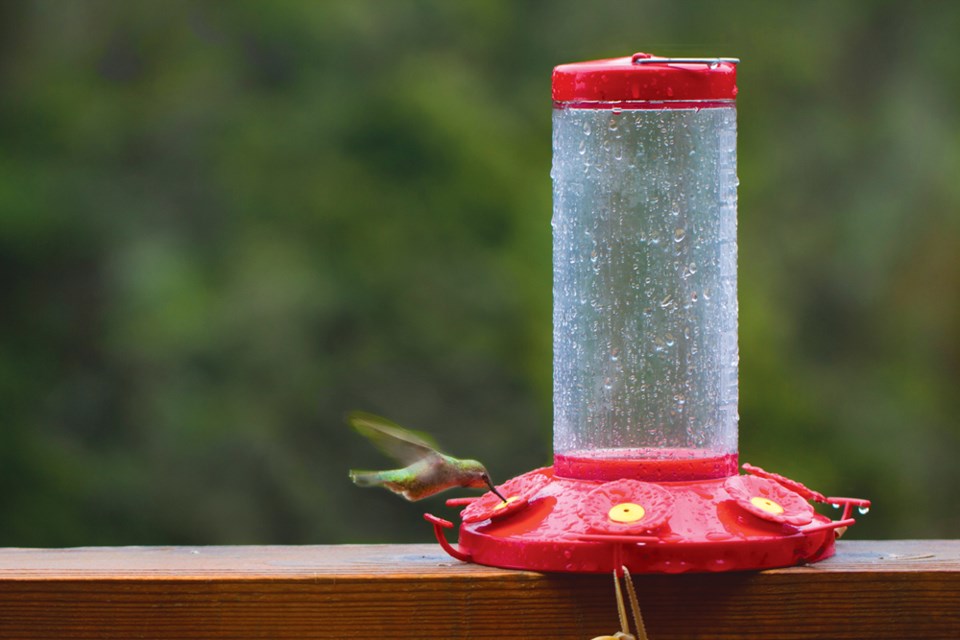On the Sunshine Coast the second week of March means we are on the cusp of the spring migration when birds of about 60 species return north to breed from their winter homes in the U.S., Mexico, and Central and South America. In case you hadn’t noticed, spring is late arriving this year, at least in relation to the last few abnormally warm and early springs. Despite that, there are some indications of spring in the bird world. Robins are returning and can be seen foraging on grassy areas and fields, red-winged blackbirds in wetland areas are extremely vocal, and the eminently inconspicuous, small brown bird, Hutton’s vireo, announces its presence with its monotonous “zu-weep” calls. Turkey vultures are early migrants and were reported in late February and two birds were observed over West Sechelt on March 2 by Robert Allen. Western meadowlarks, migrating to B.C.’s interior grasslands, often pass through the Sunshine Coast in tiny numbers early in the year and Geoff Carr reported one on his lawn in Davis Bay in late February.
B.C.’s best-known migrant bird species are, of course, the rufous hummingbird and the swallows. Rufous hummers winter in Mexico and proceed northwards up the Pacific coast approximately synchronized with the flowering of salmonberry and red flowering currant. We can expect they will be a little late this year given the retarded progress of spring, but the first male birds will probably appear about mid-March. So, it’s time to fill the hummingbird feeders for those who have not been feeding our resident Anna’s hummingbirds. Note that Anna’s have a pink gorget (throat patch) while rufous has a golden-orange one.
The first swallows of the year often appear about March 7, but again we can expect them to be late this year. The first arrivals are often reported by Aldo Cogrossi over the lagoon at Ruby Lake. Two swallow species arrive in March, the violet-green and the tree swallow. The Sunshine Coast’s three other swallow species arrive in April.
Among birders the arrival of yellow-rumped warblers is equally awaited. The males are colourful gems of black, white, grey and yellow but even so, they are somewhat elusive and are generally located by being familiar with their subdued call notes (“chip”) as they forage in alders, maples and firs. The first birds generally appear after March 12.
To report your sightings or questions, contact [email protected] or 604-885-5539. Good Birding.



